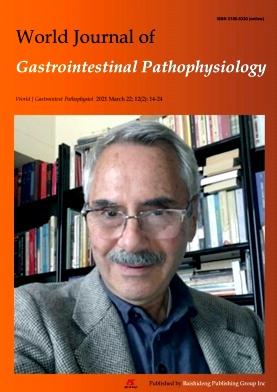Role of anti-stromal polypharmacy in increasing survival after pancreaticoduodenectomy for pancreatic ductal adenocarcinoma.
引用次数: 7
Abstract
AIM To investigate the survival impact of common pharmaceuticals, which target stromal interactions, following a pancreaticoduodenectomy for pancreatic ductal adenocarcinoma. METHODS Data was collected retrospectively for 164 patients who underwent a pancreaticoduodenectomy for pancreatic ductal adenocarcinoma (PDAC). Survival analysis was performed on patients receiving the following medications: angiotensin-converting enzyme inhibitors (ACEI)/angiotensin II receptor blockers (ARB), calcium channel blockers (CCB), aspirin, and statins. Statistical analysis included Kaplan-meier survival estimates and cox multivariate regression; the latter of which allowed for any differences in a range of prognostic indicators between groups. Medications showing a significant survival benefit were investigated in combination with other medications to evaluate synergistic effects. RESULTS No survival benefit was observed with respect to ACEI/ARB (n = 41), aspirin or statins on individual drug analysis (n = 39). However, the entire CCB group (n = 26) showed a significant survival benefit on multivariate cox regression; hazard ratio (HR) of 0.475 (CI = 0.250-0.902, P = 0.023). Further analysis revealed that this was influenced by a group of patients who were taking aspirin in combination with CCB; median survival was significantly higher in the CCB + aspirin group (n = 15) compared with the group taking neither drug (n = 98); 1414 d vs 601 d (P = 0.029, log-rank test). Multivariate cox regression revealed neither aspirin nor CCB had a statistically significant impact on survival when given alone, however in combination the survival benefit was significant; HR = 0.332 (CI = 0.126-0.870, P = 0.025). None of the other medications showed a survival benefit in any combination. CONCLUSION Aspirin + CCB in combination appears to increase survival in patients with PDAC, highlighting the potential clinical use of combination therapy to target stromal interactions in pancreatic cancer.抗间质多药在胰管腺癌胰十二指肠切除术后提高生存率中的作用。
目的探讨针对间质相互作用的常用药物对胰管腺癌切除术后患者生存的影响。方法回顾性收集164例胰管腺癌(PDAC)行胰十二指肠切除术患者的资料。对接受以下药物治疗的患者进行生存分析:血管紧张素转换酶抑制剂(ACEI)/血管紧张素受体阻滞剂(ARB)、钙通道阻滞剂(CCB)、阿司匹林和他汀类药物。统计分析包括Kaplan-meier生存估计和cox多元回归;后者允许在组间的一系列预后指标的任何差异。研究人员将具有显著生存效益的药物与其他药物联合使用,以评估协同效应。结果在个体药物分析中,未观察到ACEI/ARB (n = 41)、阿司匹林或他汀类药物(n = 39)的生存获益。然而,在多变量cox回归中,整个CCB组(n = 26)显示出显著的生存获益;风险比(HR) 0.475 (CI = 0.250 ~ 0.902, P = 0.023)。进一步的分析显示,这受到一组同时服用阿司匹林和CCB的患者的影响;CCB +阿司匹林组(n = 15)的中位生存期显著高于不服用药物组(n = 98);1414天vs 601天(P = 0.029, log-rank检验)。多因素cox回归显示,单独给予阿司匹林和CCB对生存均无统计学显著影响,但联合使用时生存获益显著;Hr = 0.332 (ci = 0.126 ~ 0.870, p = 0.025)。其他药物在任何组合中都没有显示出生存益处。结论阿司匹林+ CCB联合治疗可提高PDAC患者的生存率,这突出了联合治疗针对胰腺癌间质相互作用的潜在临床应用。
本文章由计算机程序翻译,如有差异,请以英文原文为准。
求助全文
约1分钟内获得全文
求助全文

 求助内容:
求助内容: 应助结果提醒方式:
应助结果提醒方式:


